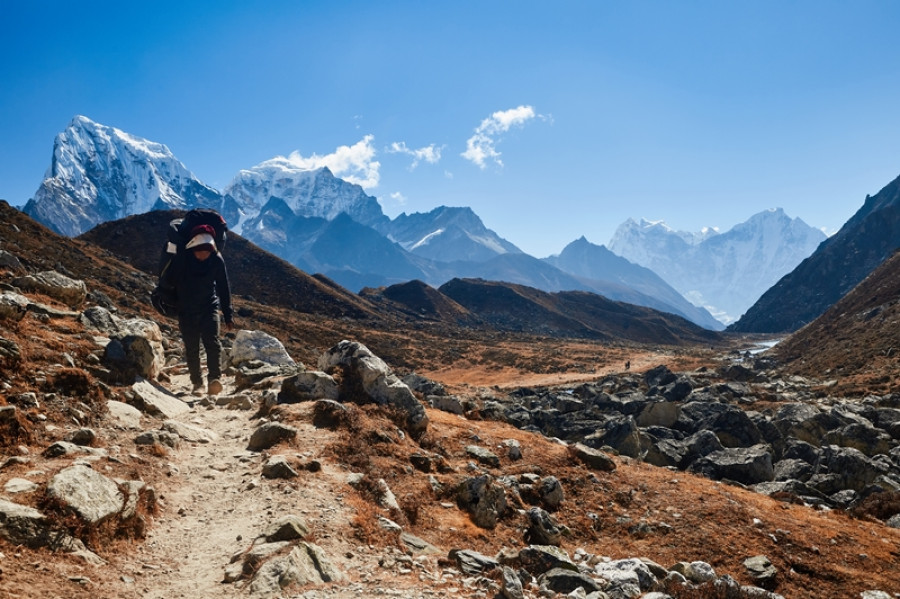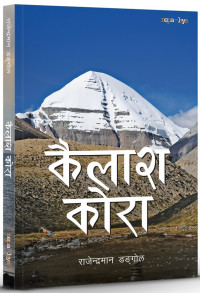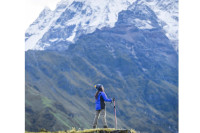Travel
Porters hopeful autumn trekking season will bring some financial relief
As the country is slated to allow foreign trekkers into the country from October 17, porters are hoping that the move will bring much-needed jobs—and money.
Tsering Ngodup Lama
It was October 2016 when Manoj Gurung landed his first gig as a trekking expedition porter. It was a seven-day trek to Annapurna Base Camp.
During the expedition, Gurung carried a backpack weighing over 25 kgs, and for his service, he was paid Rs1,200 per day.
“Even though it was a very physically demanding job, I was quite happy with what I managed to save after the expedition,” said Gurung, who lives in Ghandruk village in Kaski district. “Ever since then, I have been working as a porter, and my earnings, though not much, has allowed me to take care of my family.”
Every year, during the months from February to May (spring trekking season) and September to mid-December (autumn trekking season) season, porters like Gurung lugging heavy loads up and down the steep mountain terrain are a common sight on Nepal’s famous trekking trails.
The two trekking seasons are important for porters because that’s when the vast majority of them earn most of their yearly income. During the off-season months, the majority of porters work as daily wage workers in the cities or work as farmers in their villages and take odd jobs there.
But this year has been markedly different.
When the lockdown was announced on March 24, which brought the country to a grinding halt, the trekking industry was in the midst of a busy spring season. The abrupt end of the spring trekking season ended up depriving many porters, who are already the least paid professionals in the industry, an opportunity to make money that they’d otherwise use to last until the trekking season resumes in autumn. This has left many porters financially struggling and their families to the margins of poverty, but now with Nepal slated to allow foreign trekkers into the country from October 17, porters are hoping that it will bring much-needed jobs and money.
“In any given year I do around 12 treks, six each during spring and autumn trekking season. I make around Rs150,000 working as a porter,” said twenty-nine-year-old Gurung. “The money isn’t a lot, but it is enough to take care of the needs of my family of six. During the off-season months, I work as a farmer and take up farming jobs in my village.”
But this spring’s trekking season, Gurung says he was only able to do two treks. “My last trek for the season was a short trek to Ghorepani just a week before the lockdown,” said Gurung. “The money I made during the season was only enough to last my family for a few months.”
To make ends meet, in the last six months, says Gurung, he has taken up every odd job in the village that has come his way.
“Unlike in the cities, there are far fewer paying jobs in the villages. Hoping to make some money, a few weeks ago, I went to Chhomrong, which is a day’s walk from Ghandruk, to sell chillies. I couldn’t sell enough and instead ended up losing money,” said Gurung. “So most days I am just at home, working in our family’s small field and taking care of our livestock.”
In June, says Gurung, he ran out of money, and the family has been in financial disarray since. “I didn’t even have money to buy rice and clothes for my 15- and three-month-old daughters. Had it not been for the generosity of family and friends, things would have become extremely challenging for my family,” said Gurung.
Gurung’s case isn’t a one-off among porters.
When 65-year-old Mansi Baikaji Magar, a porter with more than two decades of experience, carried his client’s backpack on Mardi Himal trek, back in March, he had no clue that the trek would be his last of the season.
“When the lockdown was announced, I had only done two treks, and I knew my savings wouldn't last me long. I was anxious and worried,” said Magar.
Like many porters, during off-season months, Magar, who lives in Pokhara, works as a labourer at construction sites. “But due to the prolonged lockdown, there weren’t any construction jobs to be had as well, and four months ago, I ran out of money to pay rent,” said Magar.
In September, Magar says he finally landed a job as a labourer at a construction site. “The first thing I did was pay my landlord two months of rent. I am still yet to pay two more months rent, and the landlord keeps pestering me and threatens to evict me,” said Magar.
The main reason that the abrupt end of spring trekking season has pushed many porters on the margins of poverty, say Magar and Gurung, is simply because the industry doesn’t pay porters enough.
“Porters get paid anywhere between Rs1,200 to Rs1,500 per day,” said Magar. “While it may seem quite a lot, one should know that food on trekking trails are quite expensive. I work mainly in the Annapurna region, and there, a porter has to fork out at least Rs500 on food and tea a day.”
The costs for food are much higher in the Everest region, says Sangam Rai, a porter who works mainly in the Khumbu region.
“If you're working on expeditions that take you beyond Tengboche, costs of meals go up dramatically. Above 4,000 metres, a price of a simple meal costs Rs500, and after two meals a day, you save very little,” said Rai. “When I was starting out in the trade, I used to eat only one meal a day so I could save some more. Many porters still do this. If the industry paid porters better, many would have been able to save enough to tide through these extremely difficult times.”
Despite the less than satisfactory pay, says Rai, many porters continue to work in this profession in the hopes that they may get generous tips from clients.
“This one time I got a tip of Rs40,000 after an expedition. It was the largest tip I have ever received and my happiness knew no bound,” said Rai. “But you don’t get such generous tips in every expedition. It all depends on your luck.”
In September, when the government announced that it will allow forieng trekkers into the country from October 17, the news, say porters, was music to their ears.
“That was the best piece of news in many, many months,” said Rai. “But to be honest, I don’t know if trekkers will even come given that the number of cases in the country is rapidly rising.”
But Magar is optimistic that the trekkers will come, albeit in lesser numbers compared to previous autumn seasons.
“Even if we get 50 percent of the usual number of trekkers, it will bring much-needed jobs to the porter community,” said Magar.
How the autumn season unfolds will define how porters and their families will fare until spring 2021, says porters.
“The past few months have already been so difficult as it is,” said Gurung. “And if I don’t get hired for porter jobs when the autumn trekking season kicks off, it will be a very long and difficult winter for me and my family.”




 17.12°C Kathmandu
17.12°C Kathmandu








%20(1).jpg&w=300&height=200)

